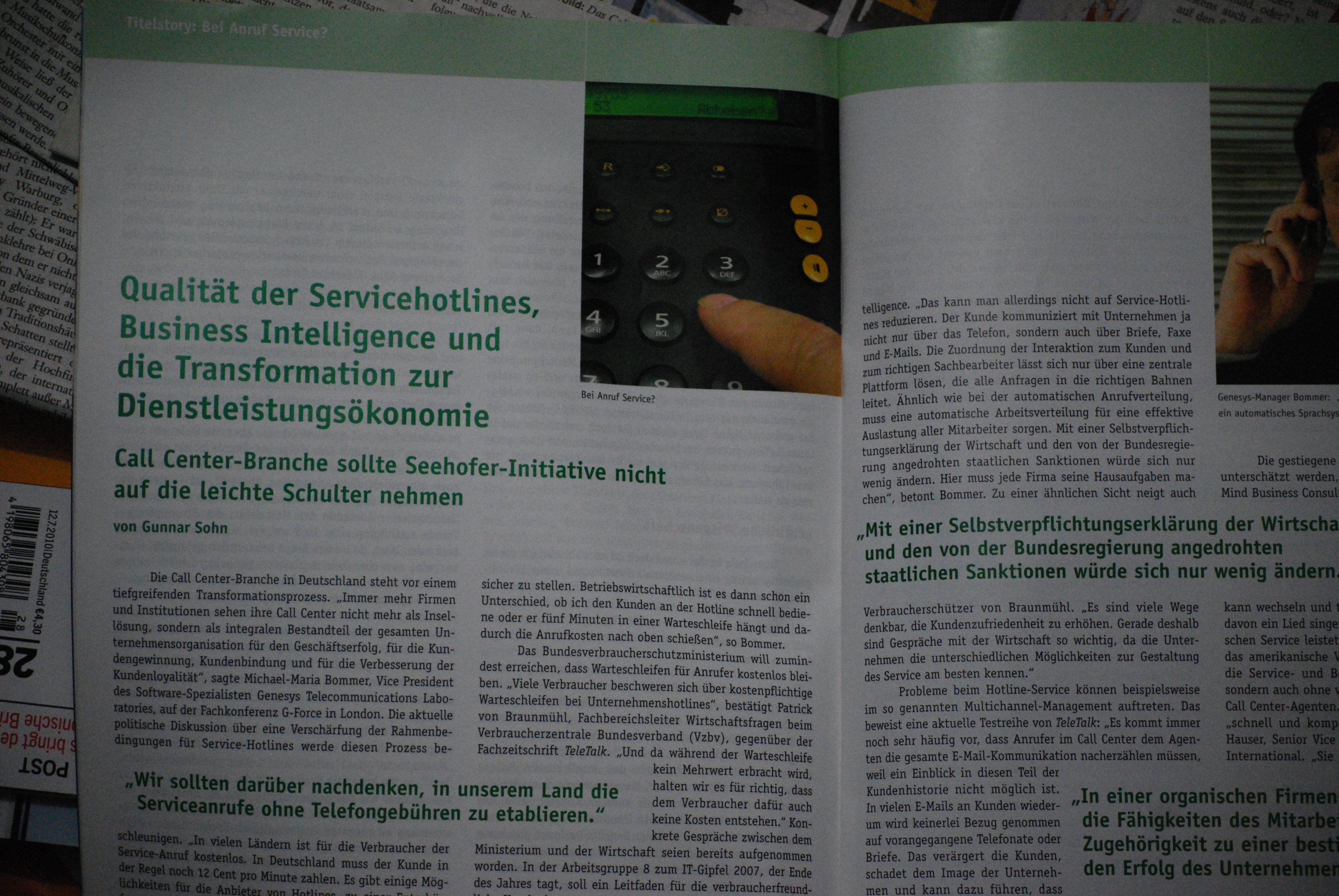 Computer and consumer electronics are merged, the Internet and mobile market has changed enormously. How could it go, asks the U.S. trade association Consumer Electronics Association - and presents bold predictions about the technology of the future. San Francisco - smart phones with them and the resulting App ecosystems could, in conjunction with new network technologies, transform the existing computer hierarchy completely.
Computer and consumer electronics are merged, the Internet and mobile market has changed enormously. How could it go, asks the U.S. trade association Consumer Electronics Association - and presents bold predictions about the technology of the future. San Francisco - smart phones with them and the resulting App ecosystems could, in conjunction with new network technologies, transform the existing computer hierarchy completely.A Trend Report of the U.S. Industry Association Consumer Electronics Association gives an outlook for developments in the next five years. The early forerunners of the smart phones, there was little applications. The first models that came on the market - such as Windows Mobile, Nokia's Series 60 and based on Palm OS Treo - had e-mail, browser and calendar programs either built into the operating system or were provided by the provider with appropriate in-house systems.
In addition, there were some applications on the gray market to buy, but which was not officially supported by the handset manufacturers. The iPhone is Apple has changed everything since the introduction of the App Store for iPhone models in 2007 as a pioneer of the App Market, a central set of application programs that can be controlled with the device itself.
Users can choose from a variety of apps, pay for the program you want to install, copy, and - all with two or clicks. Each mobile platform has been its own App market. For all stores in a very wide range volumes provide game developers in particular. The market research firm Distimo that deals exclusively with the analysis of markets App estimates such as the amount of games among the free apps for Apple's iPhone to more than 90 percent.
And even among the ten best-selling programs are paid for eight games. Casual games are a mega-market, the amazing thing is that almost all of these game programs include the category of casual games. On mobile devices, this simple, content and graphics simple knitted games often played with the same intensity as photorealistic, expensive applications on game consoles.
The CEA found that over 80 percent of smartphone owners will have their mobile phone use at least 15 minutes a week to play. More than half spend more than an hour a week with the gimmickry and ten percent of the consumers at least 16 hours of play on the phone. Between high-quality mobile games and the occasional diversion to take away the market thus offers a lot of opportunities.
Analyst Jack Cutts of the CEA expects therefore designed with a new generation of smart phones, its display and graphics processing on 3D games. Such games landscapes with complex graphics run so far only on game consoles and high-performance PCs. But most of all hardware manufacturers get involved in both the games market as well as mobile devices, their position will make better by porting successful games on the smartphone sector, noted Cutts.
PlayStation maker Sony has already made a successful Smartphone version of the Playstation Portable in view. Nintendo's 3D version of the pocket console DS stands for 2011 in the wings. And Cutts expects that Microsoft will soon follow: "If even a fraction of umsteigt the 40 million users of Microsoft's Xbox console to a smart phone that would double its market share." From its new Windows Mobile smartphone model 7, Microsoft has sold over 1.5 million units.



- Oh how far we've come. ajdesign: difted: 10 years (by... (08/12/2010)
- Romonet targets datacentre efficiency with Prognose (08/11/2010)
- Real Doc Dispenses Prognoses for Fantasy Team Jocks (20/12/2010)
- I Went From Negative to Positive (12/12/2010)
- Wait is over for brothers' chance to play together (02/12/2010)
No comments:
Post a Comment